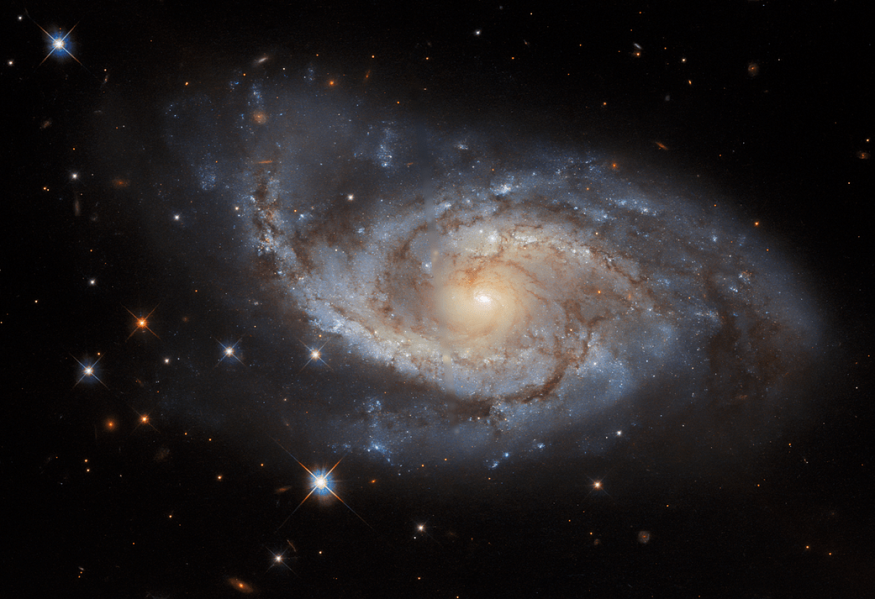NASA's Hubble Space Telescope recently discovered NGC 3318, a galaxy resembling billowing sails in a light breeze.
According to the space agency's report, this spiral galaxy is around 115 million light-years distant from Earth and located in the constellation Vela.

The spiral arms of the galaxy NGC 3318 are lazily draped across this image from the NASA/ESA Hubble Space Telescope.
NASA added that Vela was formerly part of a much larger constellation known as Argo Navis, named after the fabled Greek ship Argo. This complicated constellation, however, looked to be too big to handle. The Argo Navis was called Carina, Puppis, and Vela after distinct sections of the Argo Navis.
NASA Hubble Space Telescope Finds 'Titanic Supernova'
It wasn't always like this in NGC 3318, Screen Rant reported. An astronomer discovered signs of a 'titanic supernova' in 2000. Because NGC 3318 is so far away from Earth, the supernova most likely happened around 1885. It is something that Hubble's cosmic images routinely reveal. Something quite similar was seen in a recent shot of galaxy NGC 976. It looked to be a peaceful and serene galaxy as well. It was, however, the site of a devastating supernova many years ago.
Raise your cosmic sails ⛵
— Hubble (@NASAHubble) January 21, 2022
This #HubbleFriday image shows the galaxy NGC 3318, which is part of the constellation Vela…which was originally part of a much larger constellation known as Argo Navis after the ship Argo from Greek mythology!
Read more: https://t.co/XcXphx94J9 pic.twitter.com/R1sR0xJsSg
ALSO READ : NASA Hubble Space Telescope Shares a Photo of Another Spiral Galaxy 230 Million Light-Years Away
On that point, astronomers utilized the Pan-STARRS telescope earlier this year for the first time to investigate an active supernova. Pan-STARRS allowed astronomers to observe a fading star for 130 days before it went supernova, rather than gazing at a supernova after it had already occurred. With breakthroughs like these and the James Webb spacecraft starting science operations later this summer, 2022 is shaping up to be a fascinating year for the space community.
About Hubble Space Telescope
Hubble is one of the instruments that has been instrumental in the discovery of new galaxies. The Hubble Space Telescope takes pictures of galaxies hundreds, thousands, and millions of light-years away daily. When the James Webb Space Telescope goes online later this year, scientists will be able to observe these galaxies in much better detail, as well as gaze at ones that are even further away from Earth.
The Hubble Space Telescope, launched in 1990, is now almost 30 years old and continues to be a vital instrument for astronomical study and sharing stunning photos of space with the general public. Digital Trends said the telescope recently reached the astounding milestone of one billion seconds of operation. During that time, it has found crucial information on the expansion of the cosmos and photographing targets both far away and inside our solar system.
Last year, NASA put the telescope into safe mode due to two issues: one hardware breakdown and one synchronization difficulty, both likely connected to its age. However, engineers resolved these concerns, and the group is now ready to resume its operations.
RELATED ARTICLE : NASA Nancy Grace Roman Telescope Captures Millions of Galaxies in New Simulation Photo
Check out more news and information on Space in Science Times.











